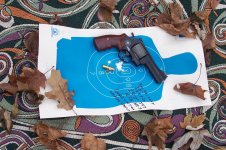SW_shooter
Member
...load the first time you try a new powder or projectile or as a newb?
As a new reloader I have been reading a lot of the threads here and manuals. But no where have I seen anyone say how many rounds you make up the first few times to ensure you are doing it correctly.
Using the loading data from a manual is great for amount of powder for a specific projectile yada yada yada, but dang it how many should I load and shoot to make sure I'm making sound loads???
I really don't want to load up a 100 rounds and find out after a couple that I screwed up or am doing something incorrect. Pulling projectiles and dumping powder seems kind of a waste considering cost and availability these days.
As always, Thanks guys and gals.
As a new reloader I have been reading a lot of the threads here and manuals. But no where have I seen anyone say how many rounds you make up the first few times to ensure you are doing it correctly.
Using the loading data from a manual is great for amount of powder for a specific projectile yada yada yada, but dang it how many should I load and shoot to make sure I'm making sound loads???
I really don't want to load up a 100 rounds and find out after a couple that I screwed up or am doing something incorrect. Pulling projectiles and dumping powder seems kind of a waste considering cost and availability these days.
As always, Thanks guys and gals.

